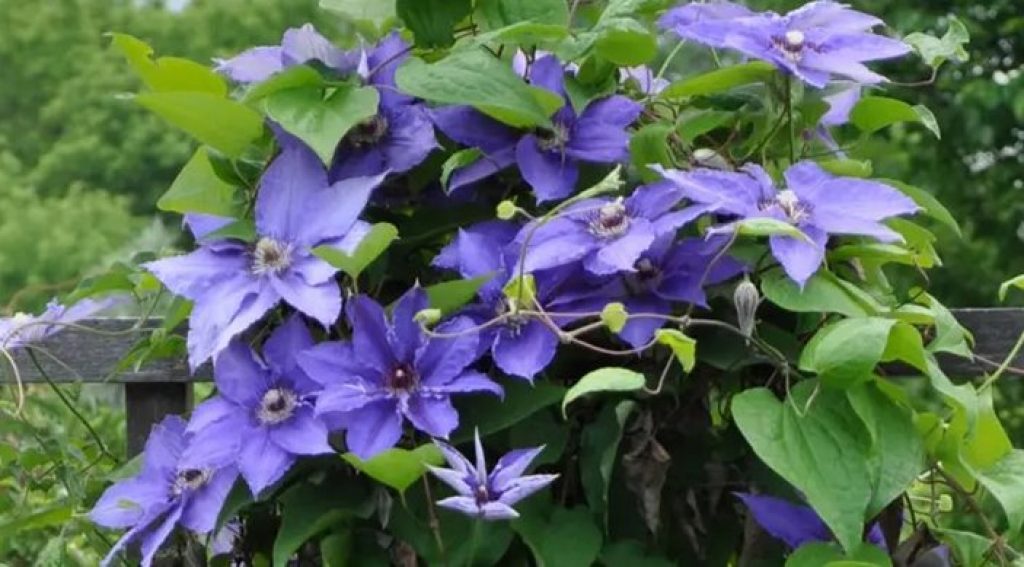Clematis is one of the genera in the family Ranunculaceae (crowfoot or buttercup family) with about 300 flowering plant species. Some of the Clematis species go by various names that include traveller’s joy, virgin’s bower, old man’s beard, leather flower, and vase vine.
Gardeners love Clematis hybrids, with some such as Clematis × jackmanii and many others much loved due to their ability to climb up walls, structures, fences, or other plants and their gorgeous purple, blue, pink, white, red, or bi-color flowers.

Clematis are some woody, climbing lianas or vines that sustain a lot of rabbit damage since they are tender (1,2). Therefore, if you live where there are wild rabbits, hares, or cottontails, expect them to eat this ornamental plant.
However, if you have domestic rabbits, ensure they don’t eat clematis as it is toxic or poisonous, mostly if consumed in large amounts since it has protoanemonin. Rabbits may suffer from oral pain and ulcers as well as diarrhea and salvation.
It is even highly toxic to humans and will cause dizziness, fainting, confusion, and convulsions. It will also cause large intestine bleeding when taken in large amounts. However, since it irritates the mount and is bitter tasting, it hardly causes fatalities.
Similarly, clematis is toxic to horses, dogs, and cats, with typical signs being vomiting, diarrhea, and excessive salivation.
Therefore, if you have house rabbits, ensure you fence around your Clematis or use any other way to keep these animals away. Remember, bunnies can’t tell what is toxic and what is not like we do and may eat this poisonous plant.
More
Despite being toxic, Native Americans Native American use a small amount to treat nervous disorders and migraines, and skin infections, while in Ethiopia, it is part of Bach’s Rescue Remedy.
There are over 80 different cultivars, but most will thrive well under any good garden soil (moist and cool). The foliage can withstand full sun, but some cultivars require a light shade.
